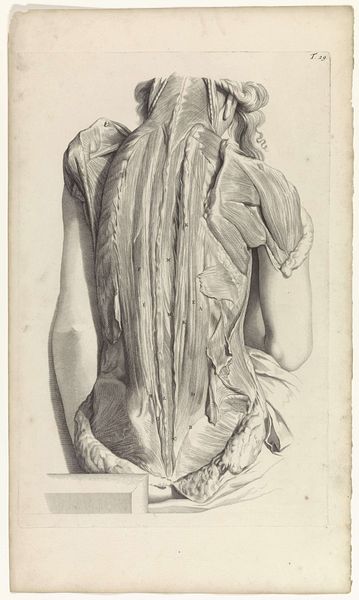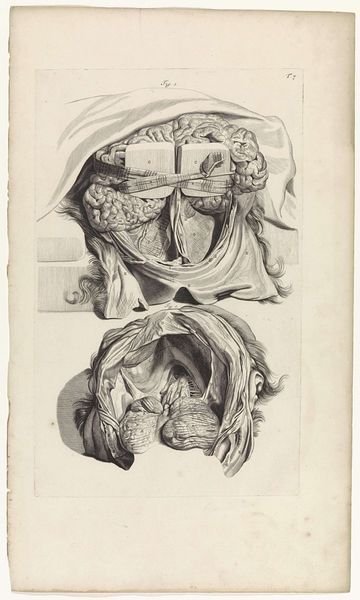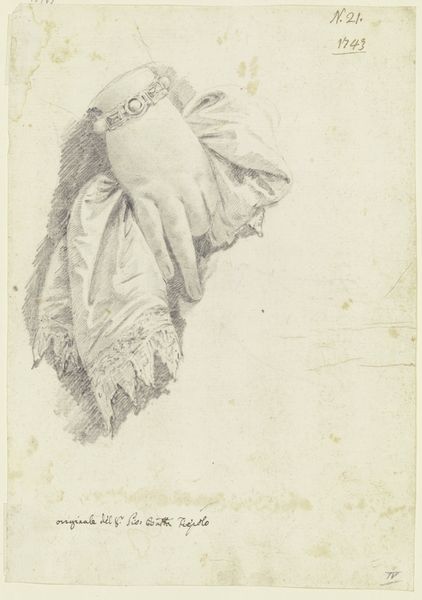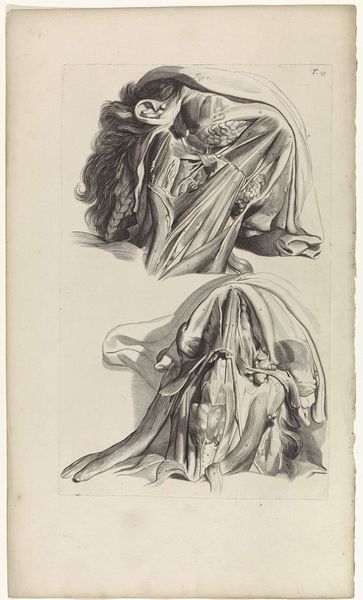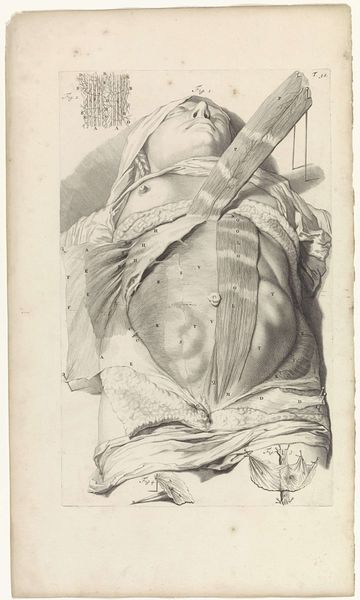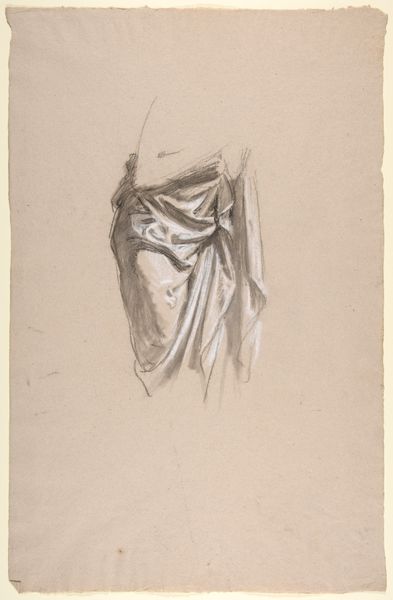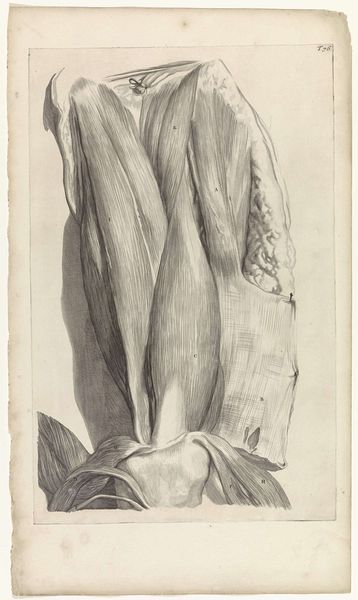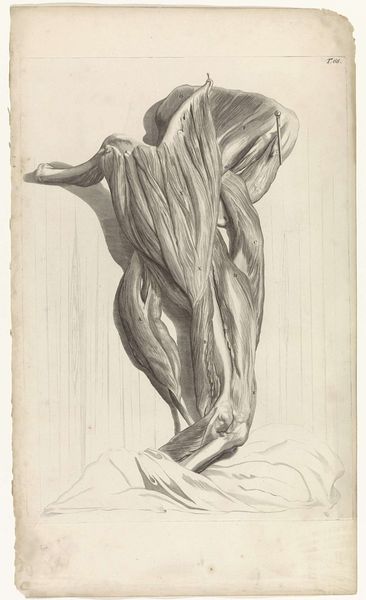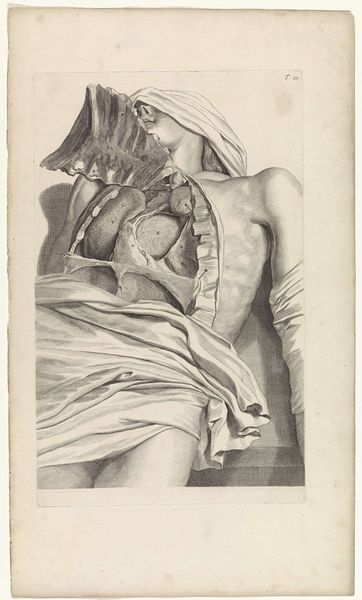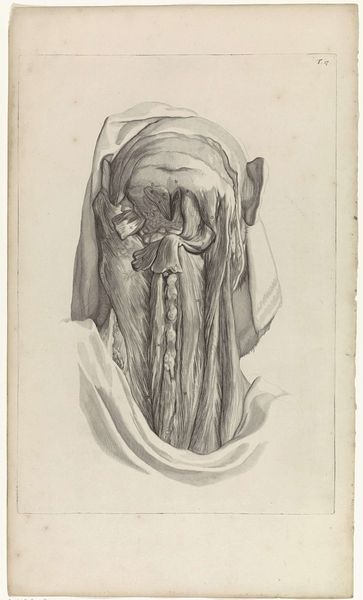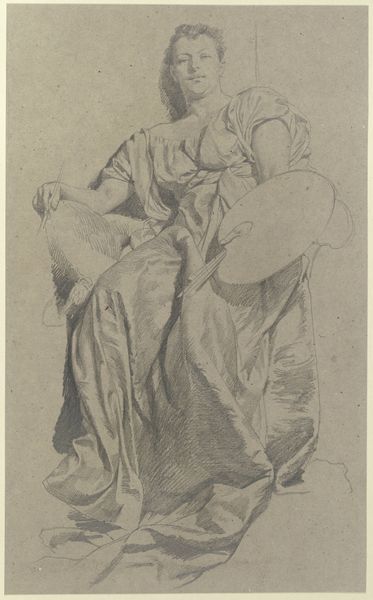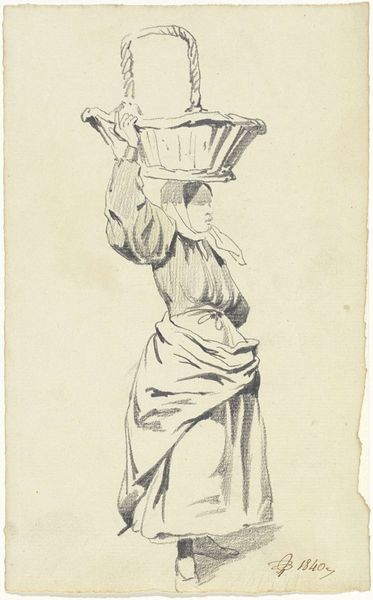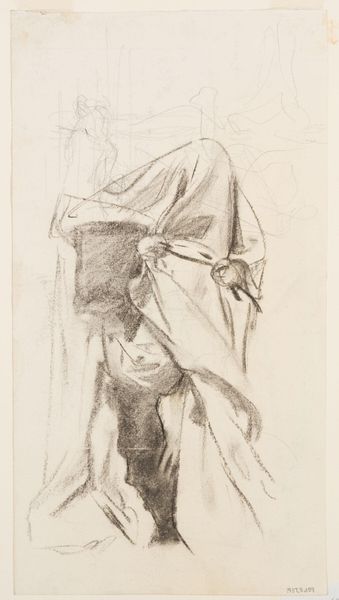
drawing, print, engraving
#
portrait
#
pencil drawn
#
drawing
#
baroque
# print
#
pencil sketch
#
form
#
pencil drawing
#
line
#
genre-painting
#
history-painting
#
academic-art
#
engraving
#
realism
Dimensions: width 274 mm, height 441 mm
Copyright: Rijks Museum: Open Domain
Curator: We're looking at Pieter van Gunst's "Anatomische studie van de mond en de kaak," created around 1685. It’s currently held here at the Rijksmuseum. Editor: My first impression is unsettling but compelling. The precise detail somehow amplifies the image's raw physicality. It evokes mortality and our relationship with our bodies as simultaneously intimate and alien. Curator: It's an engraving, typical of the era for disseminating anatomical knowledge. Note the meticulousness in rendering the exposed muscles and skeletal structure. Gunst's lines are deliberate and clean, achieving impressive clarity. Editor: Exactly! Consider the period's complex socio-political climate around scientific discovery. The Enlightenment challenged religious dogma, and here's this blatant unveiling of the human form – a defiant act in some ways. It confronts established notions of the body, questioning inherent norms, ideals, or biases related to anatomy, particularly as it relates to class or gender at the time. Curator: The composition is unusual. Rather than a typical anatomical chart with neat labeling, Gunst presents a series of dissected views, almost like studies within a larger study. Editor: Right, these dissected views bring a clinical detachment to an intimate space - the mouth, source of both nourishment and communication. I wonder how such stark representations influenced societal anxieties around health, contagion, and ultimately, death? Curator: Indeed, this print would have circulated among medical professionals and students. The academic rigor and artistic skill make it both an informative and aesthetically engaging piece. Note his cross-hatching, a technique which creates depth and a subtle modeling. Editor: The lack of a distinct subject might be purposeful. Without those contextual clues, are we encouraged to confront human fragility head-on, independent of identity or background? Curator: Food for thought. What I find compelling is how Gunst combines scientific observation with artistic finesse. It elevates mere medical illustration to something deeply considered. Editor: And its enduring power to unsettle reminds us that interrogating how and why we study the body is as important today as it was then. Thank you for that dissection. Curator: The pleasure was all mine.
Comments
No comments
Be the first to comment and join the conversation on the ultimate creative platform.
